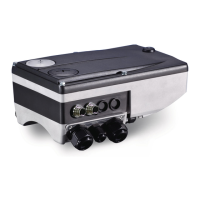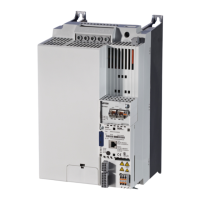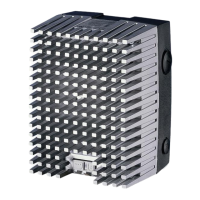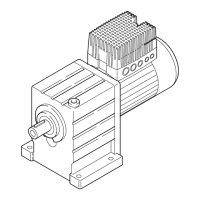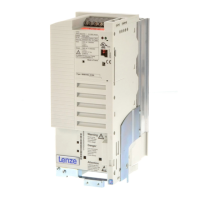Safety instructions
General safety and application notes for Lenze controllers
2
l
13
EDS84DG752 EN 7.0
Application as directed
Inverters are components which are designed for installation in electrical systems or
machines. They are not to be used as domestic appliances, but only for industrial purposes
according to EN 6100032.
When inverters are installed into machines, commissioning (i.e. starting of the operation
as directed) is prohibited until it is proven that the machine complies with the regulations
of the EC Directive 2006/42/EC (Machinery Directive); EN 60204 must be observed.
Commissioning (i.e. starting of the operation as directed) is only allowed when there is
compliance with the EMC Directive (2014/30/EU).
The inverters meet the requirements of the Low−Voltage Directive 2006/35/EU. The
harmonised standard EN 61800−5−1 applies to the inverters.
The technical data and supply conditions can be obtained from the nameplate and the
documentation. They must be strictly observed.
Warning: Inverters are products which can be installed in drive systems of category C2
according to EN 61800−3. These products can cause radio interferences in residential areas.
In this case, special measures can be necessary.
Transport, storage
Observe the notes on transport, storage, and appropriate handling.
Observe the climatic conditions according to the technical data.
Installation
The inverters must be installed and cooled according to the instructions given in the
corresponding documentation.
The ambient air must not exceed degree of pollution 2 according to EN 61800−5−1.
Ensure proper handling and avoid excessive mechanical stress. Do not bend any
components and do not change any insulation distances during transport or handling.
Donot touch any electronic components and contacts.
Inverters contain electrostatic sensitive devices which can easily be damaged by
inappropriate handling. Do not damage or destroy any electrical components since
thismight endanger your health!
Electrical connection
When working on live inverters, observe the applicable national regulations for the
prevention of accidents.
The electrical installation must be carried out according to the appropriate regulations
(e.g. cable cross−sections, fuses, PE connection). Additional information can be obtained
from the documentation.
This documentation contains information on installation in compliance with EMC
(shielding, earthing, filter, and cables). These notes must also be observed for
CE−markedinverters. The manufacturer of the system is responsible for compliance with
the limit values demanded by EMC legislation.
Lenze inverters may cause a DC current in the PE conductor. If a residual current device
(RCD) is used for protection against direct or indirect contact for an inverter
withthree−phase supply, only a residual current device (RCD) of type B is permissible on the
supply side of the inverter. If the inverter has a single−phase supply, a residual current
device (RCD) of type A is also permissible. Apart from using a residual current device (RCD),
other protective measures can be taken as well, e.g. electrical isolation by double or
reinforced insulation or isolation from the supply system by means of a transformer.

